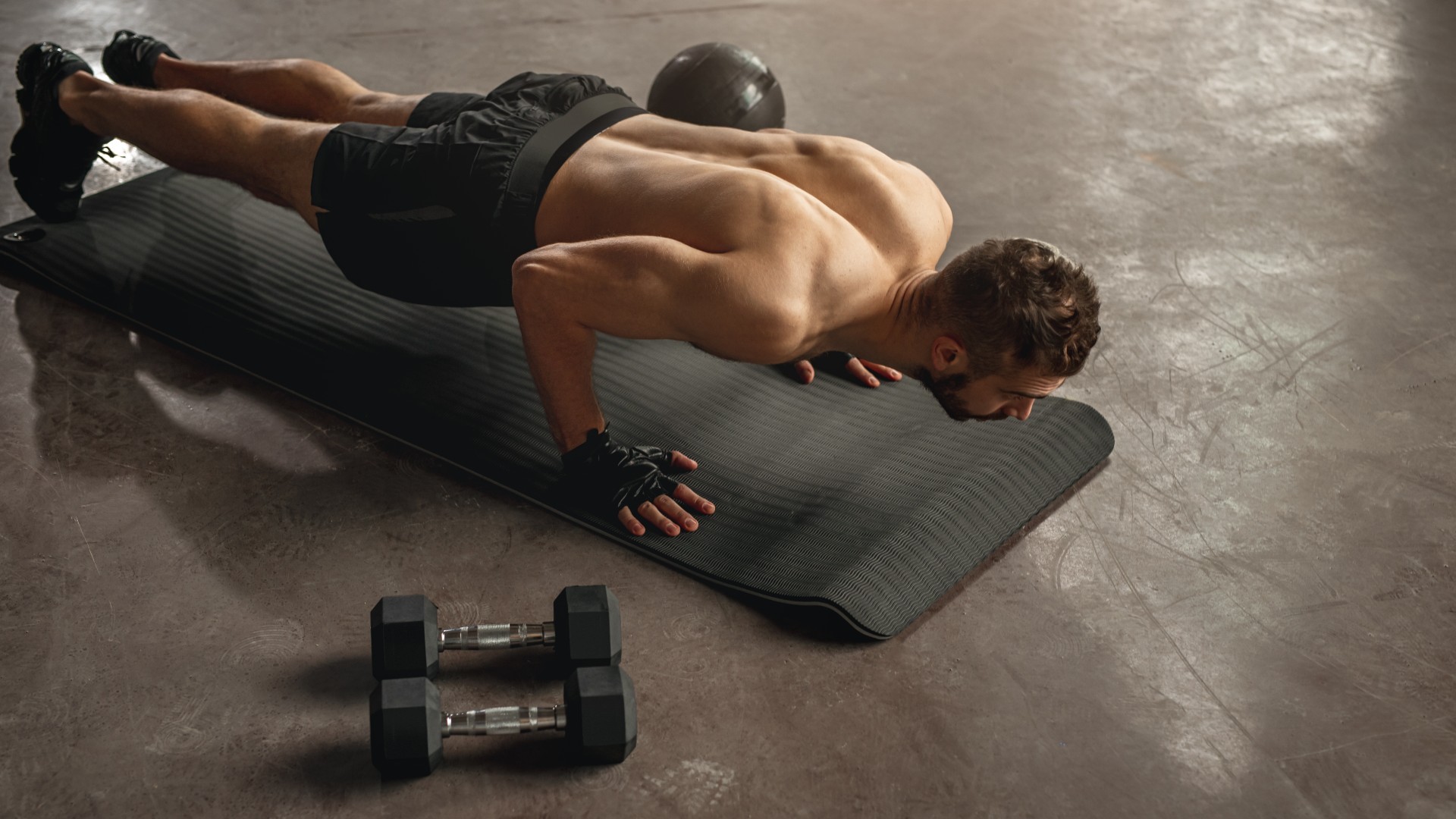
A metabolic circuit could help you burn calories and torch major muscle groups in a short amount of time. If you want to combine strength and cardio exercises into one workout, this is a great way to do it.
Great news for those who don’t want to spend hours in the gym, but you’ll need to be prepared for some serious sweat and hard work.
To do this workout, you’ll need a set of the best adjustable dumbbells, a medicine ball and a jump rope. If you don't them, we’ve included substitutions below for those of you who have limited access to equipment.
But before you jump in feet first, fat loss isn’t a one-workout feat, despite high-intensity metabolic circuits potentially increasing fat burn. Find out what metabolic training involves and how it could be the secret to calorie burn and fat loss.
What is the difference between HIIT and metabolic training?
High-intensity interval training (HIIT) involves working continuously close to your maximum intensity and heart rate with an on-off work-rest ratio. Metabolic training taps into aerobic and anaerobic exercise — you’ll switch between intensities using strength and cardio exercises, and the timing is much looser.
Also known as metcon (metabolic conditioning), this training type could involve circuits, calorie machines, endurance and high reps. But it’s worth remembering that circuit training, HIIT and metabolic conditioning aren’t interchangeable.
Benefits of metabolic circuits
The payoff includes improving the energy systems responsible for various exercise types. You could also increase power, build strength and leaner muscle and send your body into calorie-burning mode, increasing your metabolism through the “afterburn effect.”
Get instant access to breaking news, the hottest reviews, great deals and helpful tips.
If you’re unfamiliar with EPOC (Excess Post-Exercise Oxygen Consumption), your body attempts to make up its oxygen deficit after high-intensity exercise. Your metabolism will be elevated for hours after, which supercharges calorie burn as it returns to balance.

That aside, calorie burn is individualistic and depends on factors like intensity, hormones and sex. If you want to boost your metabolism consistently, train regularly and increase the amount of NEAT you do (this refers to movement outside of exercise, like standing up) to improve your chances.
If you’re trying to make a direct comparison between shorter metabolic conditioning sessions and steady-state cardio, you might find the latter burns more calories at the time, but metabolic training continues burning calories long after the weights are set aside, and weight training increases lean muscle mass, which could also improve your metabolic rate.
5-move 15-minute metabolic circuit workout
We like to hit as many muscle groups as possible at Tom’s Guide, so these five moves are all compound exercises, which means they target multiple muscles and joints. You can find out how to put together your own metcon workout here.
Perform each exercise back-to-back for 60 seconds, then rest for 2-3 minutes after each circuit, totaling 3 rounds. To make it harder, perform four rounds totaling 20 minutes. Keep rest minimal and work at a consistent pace so that you don’t peak too early. Only use the transitions to rest, and try to increase your reps or calories each round so that your last is your strongest.
1. Medicine ball slams

Med ball slams are a staple in training sessions like CrossFit and require plenty of core strength. We also swear by them for letting off steam after a tough day at work. No med ball? You can follow the same movement pattern holding a dumbbell instead — just don’t throw it!
How:
- Stand with the ball in front of you and your feet shoulder-width apart.
- Engage your core, then squat down to pick the ball up with a flat back.
- Drive the ball above your head with elbows bent and the ball close to your body.
- Extend arms, hips and knees fully in the overhead position, then slam the ball down to the ground between your feet.
- Catch the ball on the bounce and repeat.
2. Jumping rope
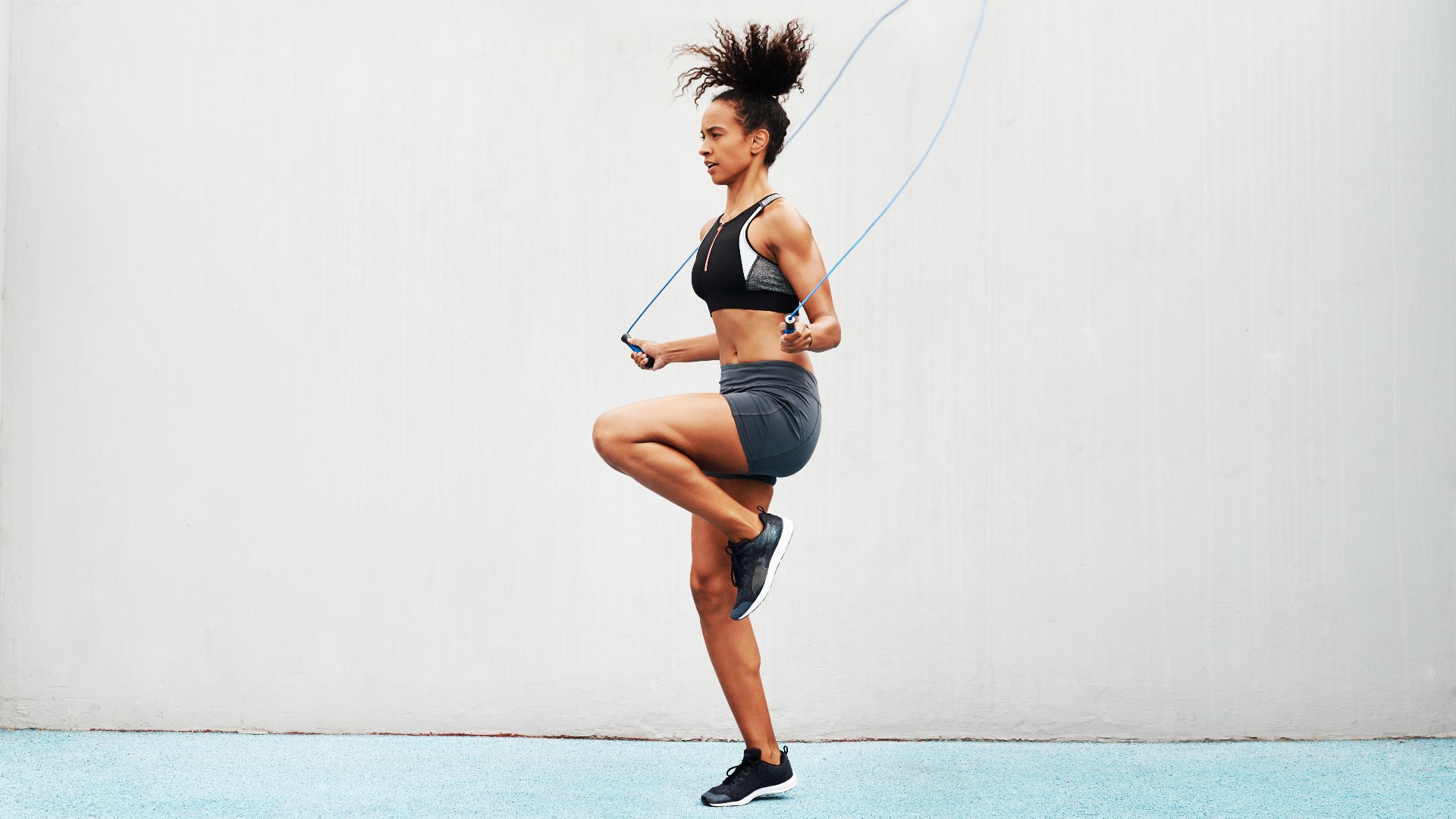
Jumping rope needs no explanation, and most people have tried it with varying degrees of success. But does jumping rope burn more calories than running? The exercise can certainly ramp up your heart rate, but if you prefer to leave the ropes for the professionals, substitute this exercise for a calorie machine or 60 seconds of short sprints.
3. Push-ups
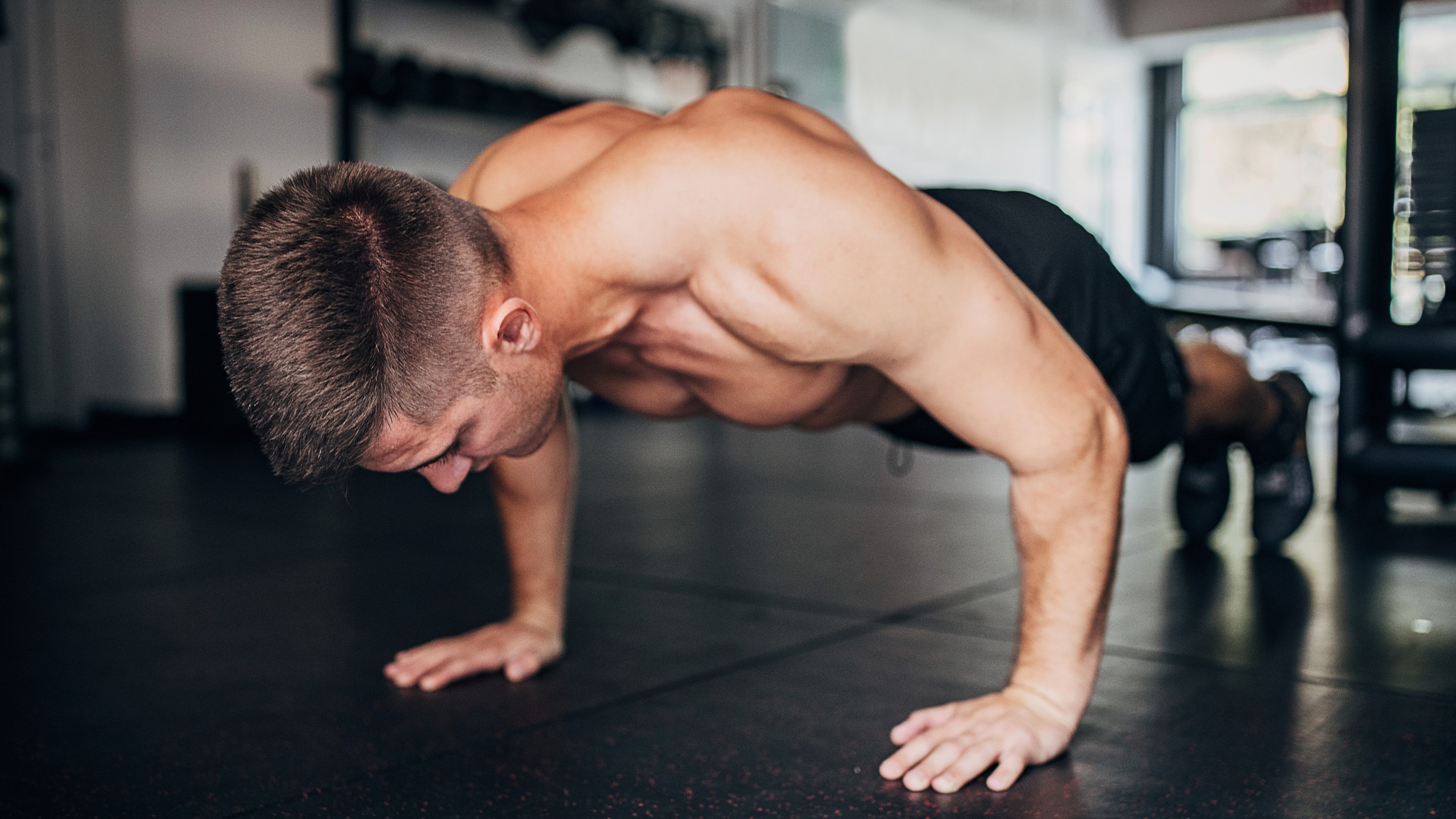
We’re no strangers to bodyweight push-ups at Tom’s Guide, and if you’re bored of them, here are 5 chest day variations. You can also figure out how to do a push-up properly with our guide.
4. Dumbbell walking lunges with burpee
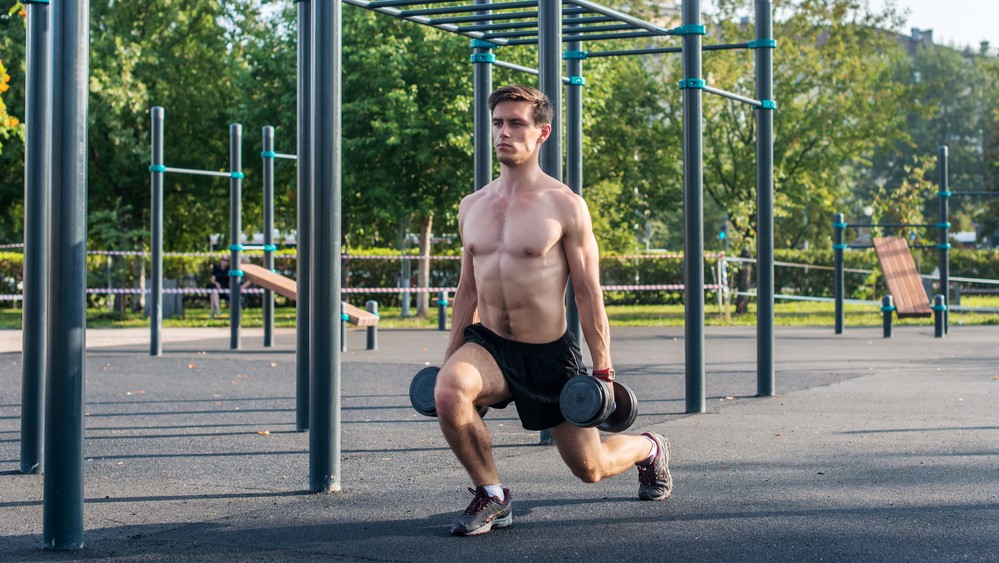

Learn how to do a lunge and burpees here. Hold a dumbbell in both hands and perform one lunge on each leg, then move straight into a chest-to-floor burpee while still holding the weights. You can sub these weights out for whatever you have.
5. Dumbbell snatches
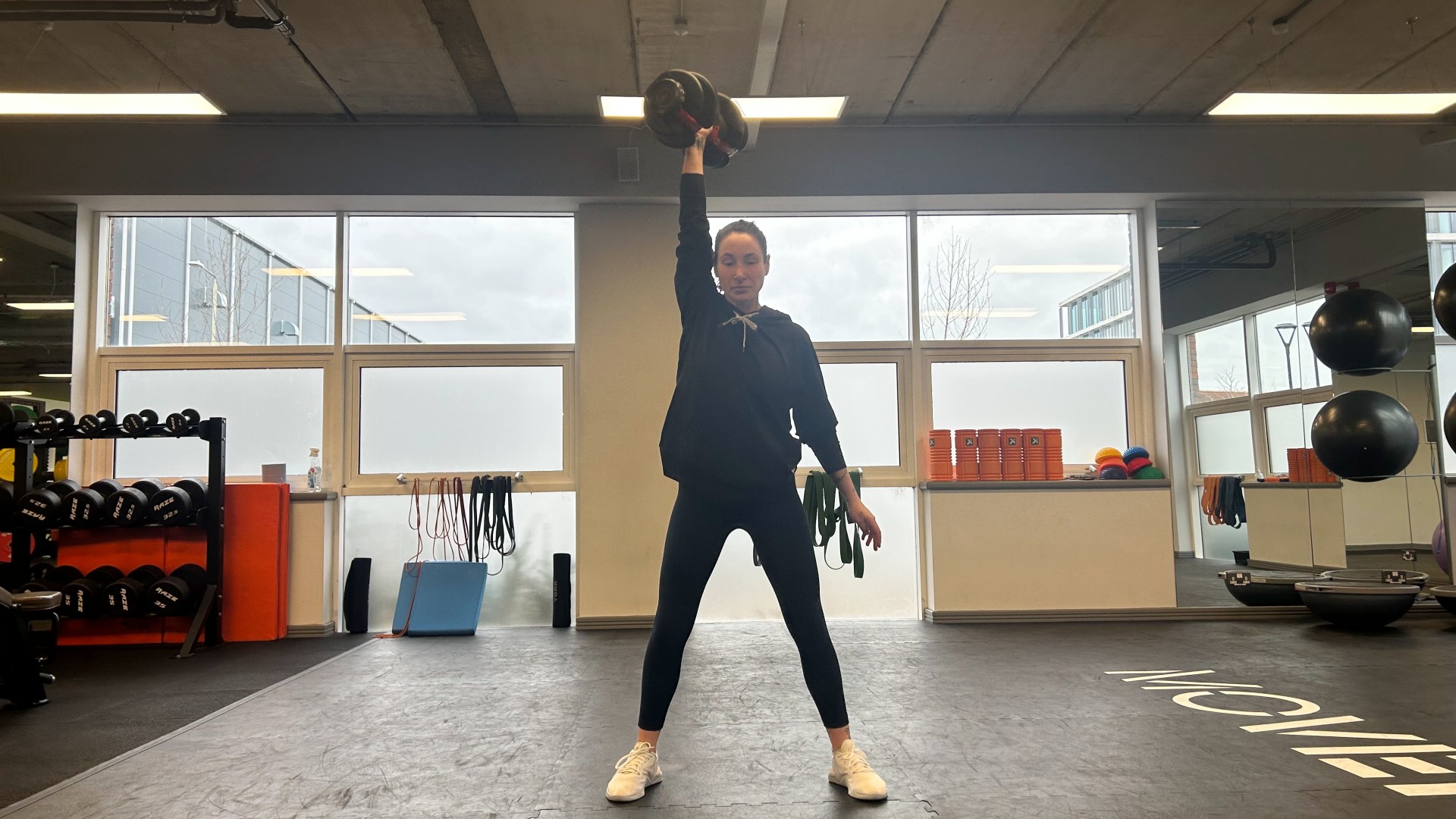
Dumbbell snatches aren’t reserved for CrossFitters. If you’re new to them, just learn the proper technique from the ground up. Thankfully, you can turn to our trusted guide on how to snatch correctly with different kinds of weights before you get started. And practice makes perfect, so a minute per round gives you plenty of time to get the hang of it.
Start by alternating one weight, then if you feel comfortable, hold a dumbbell in both hands.
Try this workout several times a week alongside lifting weights and increasing your daily NEAT total for maximum effectiveness. But remember, muscles get stronger through rest and recovery, which is when the body can heal from a tough workout. Try to schedule active rest days, and add a stretch routine into the mix.
If you’re new to this workout style, focus on getting your form tight and lifting lighter weights until you feel comfortable with each move. You can switch out exercises whenever you need variety but try to keep them compound to maximize calorie burn and muscle activation.
More from Tom's Guide
- Boost your metabolism without dieting, here’s how
- This calisthenics workout uses just 4 exercises to build full-body strength and muscle
- This 12-move ab workout develops your core muscles in under 10 minutes.

Sam Hopes is a level 3 qualified trainer, a level 2 Reiki practitioner and fitness editor at Tom's Guide. She is also currently undertaking her Yoga For Athletes training course.
Sam has written for various fitness brands and websites over the years and has experience across brands at Future, such as Live Science, Fit&Well, Coach, and T3.
Having coached at fitness studios like F45 and Virgin Active and personal trained, Sam now primarily teaches outdoor bootcamps, bodyweight, calisthenics and kettlebells.
She also coaches mobility and flexibility classes several times a week and believes that true strength comes from a holistic approach to training your body.
Sam has completed two mixed doubles Hyrox competitions in London and the Netherlands and finished her first doubles attempt in 1:11.
